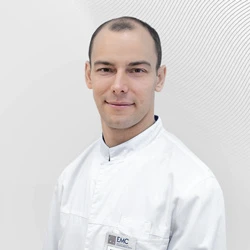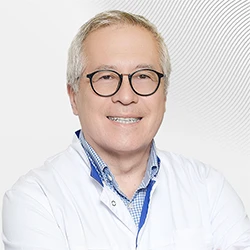Hemorrhoids - diagnosis and treatment
The possibilities of the European Medical Center:
Conservative and surgical treatment of hemorrhoids according to modern international protocols
Comfortable reception, individual approach
Specialists with work experience and internships in Europe
In case of delicate women's problems, the appointment is conducted by a female proctologist
The possibility of consulting specialized specialists: therapist, gastroenterologist, dermatologist, etc.
We help even in the most difficult cases
Hemorrhoids are diseases associated with abnormal enlargement of hemorrhoids. Hemorrhoids are special vascular formations located in the lower part of the rectum, outside (in the area at the entrance to the anus) and inside (above the border of the anal canal).
One of the most common manifestations of hemorrhoids is the discharge of blood when going to the toilet. However, it is important to know that such a symptom can be a sign of a much more serious problem, even a malignant neoplasm (cancer) of the rectum or other parts of the intestine. That is why do not delay the visit to the proctologist, deciding that this is just a symptom of hemorrhoids, and it is not dangerous!
Why hemorrhoids develop
The rectum is abundantly supplied with blood, it is here that the arterio-venous plexuses are located — external and internal hemorrhoids. For various reasons, blood stagnation occurs in the area of the hemorrhoidal plexus — in the anal canal and the lower part of the rectum. The walls of the veins stretch, bulge in some places, and a hemorrhoidal node forms. It is believed that dystrophic processes in the connective tissue structures of the submucosal layer of the rectum and in the ligament play a significant role in the occurrence of internal hemorrhoids, which to a certain extent holds the internal nodes inside the rectum, and when weakened, promotes the loss of nodes from the anal canal.
Provoking factors of hemorrhoids:
Excessive physical activity (with an increase in intra-abdominal pressure, which leads to loss of hemorrhoids);
Straining with constipation (pressure in the rectum increases and blood flow to the hemorrhoids increases, which contributes to their enlargement and subsequent prolapse);
Alcohol abuse (vasodilation in the anal area can also cause hemorrhoidal bleeding);
Pregnancy (as the uterus increases, the pressure in the abdominal cavity increases);
Sedentary lifestyle (leads to stagnation in the pelvic region and primarily in the rectum).
Symptoms of hemorrhoids
Painful lumps in the anus with external hemorrhoids;
Prolapse of hemorrhoids during bowel movements (with internal hemorrhoids), as well as in the later stages – even when lifting weights, coughing, sneezing;
Bleeding that occurs during defecation (an admixture of red blood to the stool, the release of blood in the form of drops or a thin trickle);
Pain in the anus, usually associated with nodular thrombosis;
Discomfort in the anus, heaviness associated with a feeling of incomplete bowel movement. The feeling of discomfort directly depends on the size of the hemorrhoids.
Bleeding develops when the mucous membrane of the node is injured, which is overgrown at the site of the node formation and is easily vulnerable when passing a dense stool. Diarrhea (diarrhea) can also cause hemorrhoidal bleeding, irritating and damaging the mucous membrane in the area of the hemorrhoid.
External and internal hemorrhoids
The external hemorrhoids, located closer to the anus, are covered with skin with a large number of pain receptors. Thrombosis of the external nodes is accompanied by severe pain, which is often a reason to seek urgent proctological care.
Internal hemorrhoids form inside the anal canal at the point of its passage into the rectum. The pain sensitivity of the nodes is insignificant, since there are practically no pain receptors in the mucous membrane above the jagged line. The first symptoms of internal hemorrhoids are bleeding and prolapse during bowel movements.
Simultaneous enlargement of both external and internal nodes is most often observed, such hemorrhoids are called combined.
Hemorrhoids: clinical picture
The acute course is more often characteristic of external hemorrhoids and is the formation of a blood clot in the hemorrhoid node as a result of prolonged stagnation of blood, physical exertion, sudden weight lifting, etc.
Thrombosed hemorrhoids cause severe pain, which increases with movement, coughing, and sneezing. The node itself is bluish in color, edematous, tense and sharply painful. Subsequently, inflammation involving subcutaneous tissue may join the thrombosis. Also, the acute course of the disease includes heavy bleeding from internal nodes, which requires urgent hospitalization.
Typical signs of chronic hemorrhoids are regular bleeding, usually associated with bowel movements and prolapse of hemorrhoids from the anus.
The chronic course of internal hemorrhoids is divided into 4 stages:
It bleeds during defecation, the nodes do not fall out of the rectum.
The nodes fall out and are subsequently inserted into the anal canal on their own. With or without bleeding.
The nodes are falling out, manual insertion into the anal canal is required. With or without bleeding.
Nodes are constantly falling out, it is impossible to fix them in the anal canal. With or without bleeding.
Diagnosis of hemorrhoids
The diagnosis of external or internal hemorrhoids is based on the patient's complaints and the results of an examination of the anus and anal canal. Sometimes a doctor may recommend performing a rectoscopy to diagnose concomitant diseases of the rectum and sigmoid colon, or a colonoscopy if the patient is suspected of having inflammatory diseases or neoplasms of the colon. The recommendations for colonoscopy for patients who complain of blood in the stool and discomfort in the anus are explained by the caution of coloproctologists regarding oncological diseases of the rectum and colon.
Hemorrhoid treatment
Hemorrhoids are not a sentence! It can (and should) be completely cured!
The treatment method is selected individually for each patient based on the leading complaints.
Our clinic uses both surgical and conservative hemorrhoid treatment methods.:
Conservative treatment is recommended at the initial stage, when the symptoms of hemorrhoids (enlarged nodes, blood discharge during defecation) are bothering for the first time, or if the symptoms increase rarely and their duration is short. But even if you have been suffering from hemorrhoids for several years, this does not mean that conservative treatment is not for you. Often, understanding the problem and making the right recommendations on lifestyle, nutrition, and preventive medication can significantly reduce the number of exacerbations and slow down the development of the disease as much as possible. The European conservative treatment regimens that we use are quite effective in some cases.
Minimally invasive methods (outpatient surgery) is a mini–operation performed in a doctor's office under anesthesia using the latest surgical techniques and instruments, after which the patient goes home with recommendations for bandages (wound care for proper and rapid healing) and a doctor's appointment.
Surgical treatment – after a preliminary (preoperative) examination, the operation is performed in a hospital operating room, with mandatory anesthesia, after which the patient spends one or more days in the ward under the supervision of a doctor. One day is usually enough.
In case of external thrombosed hemorrhoids, an operation to remove a blood clot or excision of the thrombosed node itself is performed if the time from the onset of the disease is no more than 48-72 hours and the patient experiences unbearable pain. In cases where more time has passed, the pain syndrome usually decreases significantly, and the patient is prescribed conservative therapy. Later, after 4-6 weeks, the swollen node decreases in size and only a small lump remains under the skin or in the anal canal.
Treatment of internal hemorrhoids depends on the severity of symptoms and the degree of nodule prolapse. It is extremely rare for a patient to be immediately prescribed surgical treatment. Conservative therapy is a modern approach to the treatment of patients with hemorrhoidal disease and is performed in 90% of patients with chronic hemorrhoids. If, after conservative therapy, the activity of the disease has decreased and a normal quality of life has been restored, then supportive therapy is offered.
Our experience shows that most cases of chronic hemorrhoids could be successfully cured at an early stage by therapeutic methods — a diet that promotes the formation of soft, regular stools, hygienic procedures and, in some cases, medications in the form of suppositories and ointments. However, the majority of patients complain, which are typical for stage 2-3 with pronounced clinical manifestations, when self-medication does not help, and the disease causes significant inconvenience.
Surgical treatment of enlarged hemorrhoids with bleeding and prolapse up to grade 3 can be performed on an outpatient basis without hospitalizing the patient. The so-called minimally invasive techniques are used, which do not require anesthesia or are performed under local anesthesia.
Ligation is the application of an elastic latex or silicone ring to the base of an internal hemorrhoid node in order to stop its blood supply. Gradually, hemorrhoids die off and are rejected during bowel movements (usually after 5-10 days), and small scars remain in their place. The method is mainly applicable for the treatment of internal hemorrhoids in the second, sometimes third stage, and when the nodes are located in the anal canal area above the so-called dentate line, where there are no pain receptors, therefore, if the procedure is performed correctly, the patient does not experience severe pain. No more than 1-2 nodes can be ligated at the same time, and the procedure can be repeated no earlier than 2 weeks later.
After the procedure, the patient may experience minor soreness, a feeling of a foreign body in the anus, and a false urge to defecate that persists for several days. The process of hemorrhoidal node rejection may be accompanied by minor bleeding, which quickly passes.
Ligation is the most common method of outpatient treatment of hemorrhoids, however, practice shows that recurrence of the disease occurs after 1.5-2 years in more than 30-70% of patients, since the procedure does not eliminate the causes of hemorrhoids.
Desarterization of hemorrhoids under the control of ultrasound Dopplerometry, HAL (Hemorrhoidal Artery Ligation), is used to treat internal hemorrhoids of stage 2-3. The ultrasound sensor determines the position of the branches of the artery supplying blood to the lower rectum, the vessels above the dentate line are stitched and ligated. Thus, the blood supply to the mucous membrane in the area of hemorrhoid formation stops. A variation of the technique is desarterization with HAL-RAR mucopexia (Recto Anal Repair). Mucopexy is an additional stitching of the sagging mucous membrane with a thread and pulling the stitched tissue up. Hemorrhoids subside, stop bleeding and, in most cases, are replaced by connective tissue. In addition, at the same time as vascular ligation, the internal nodes are securely fixed in the rectum.
The advantages of the method are minor pain, rapid recovery of working capacity. The method has been very popular in the last 10 years, but the accumulated data indicate almost 50% recurrence of the disease.
Radical intervention — surgical removal of internal hemorrhoids (hemorrhoidectomy) is used for stage 3-4 hemorrhoids, protruding and non-correcting nodules, in the absence of the effect of conservative treatment and ineffectiveness or impossibility of minimally invasive techniques.
During hemorrhoidectomy, excess tissue is removed, causing bleeding and nodule prolapse. In the surgical treatment of hemorrhoids in the hospital (Milligan-Morgan hemorrhoidectomy), EMC coloproctologists use an ultrasonic harmonic scalpel and a bipolar coagulator: these instruments provide reliable coagulation and virtually bloodless removal of hemorrhoids without the use of suture material. Although treatment is more painful, recurrence occurs much less frequently, in our experience, in only 1-5% of cases. The operation is performed under general or epidural anesthesia.
In some cases, stapler hemorrhoidopexy or Longo surgery is used to treat internal hemorrhoids. Excision of a part of the mucous membrane reduces the blood supply to the nodes, which gradually become overgrown with connective tissue.
It should be remembered that the treatment of hemorrhoids is most effective in its initial stage. Therefore, EMC doctors recommend that at the first signs of hemorrhoids, do not postpone a visit to a coloproctologist. You should also consult a doctor if the patient finds blood during defecation or in the stool, pain, itching and a feeling of a foreign body in the anus, as similar symptoms are observed in more serious proctological diseases, including cancer.
If the diagnosis is based on classical and modern methods of functional diagnostics, remember that consent to surgery (as well as to any other treatment) is your voluntary decision. Do not agree to the proposed treatment if there is even the slightest doubt. For complete confidence, get "Second opinion" from specialists-EMC proctologists.
Why the EMC
The first and only clinic in Russia, created in the image of the world's leading clinics
EMC is a multidisciplinary center offering patients a high level of medical services and a personalized approach
Worldwide recognition and awards
 Learn more
Learn more
Worldwide recognition and awards
 Certificates and licenses
Certificates and licenses
Make an appointment for a consultation
Specify your contacts and we will contact you to clarify the details
Reviews
and new products of the EMC
.webp)


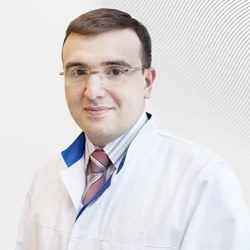
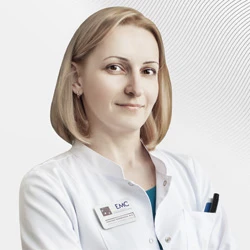
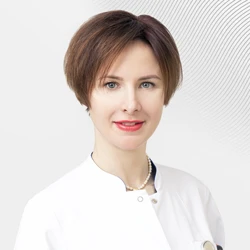

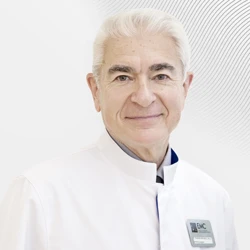
.webp)
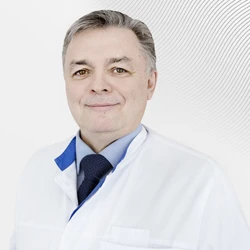
.webp)
.webp)
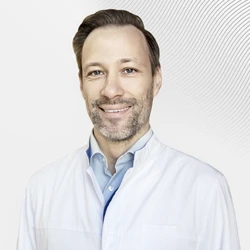
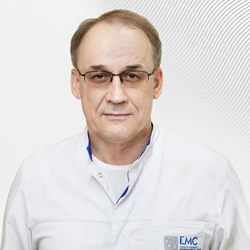
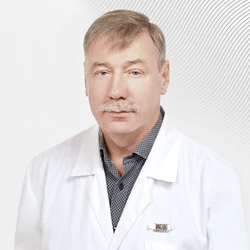
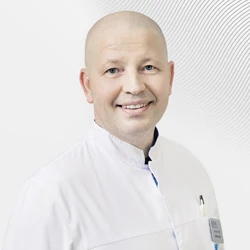
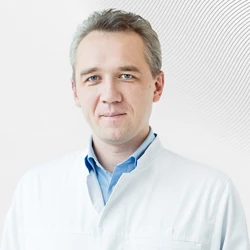
.webp)
